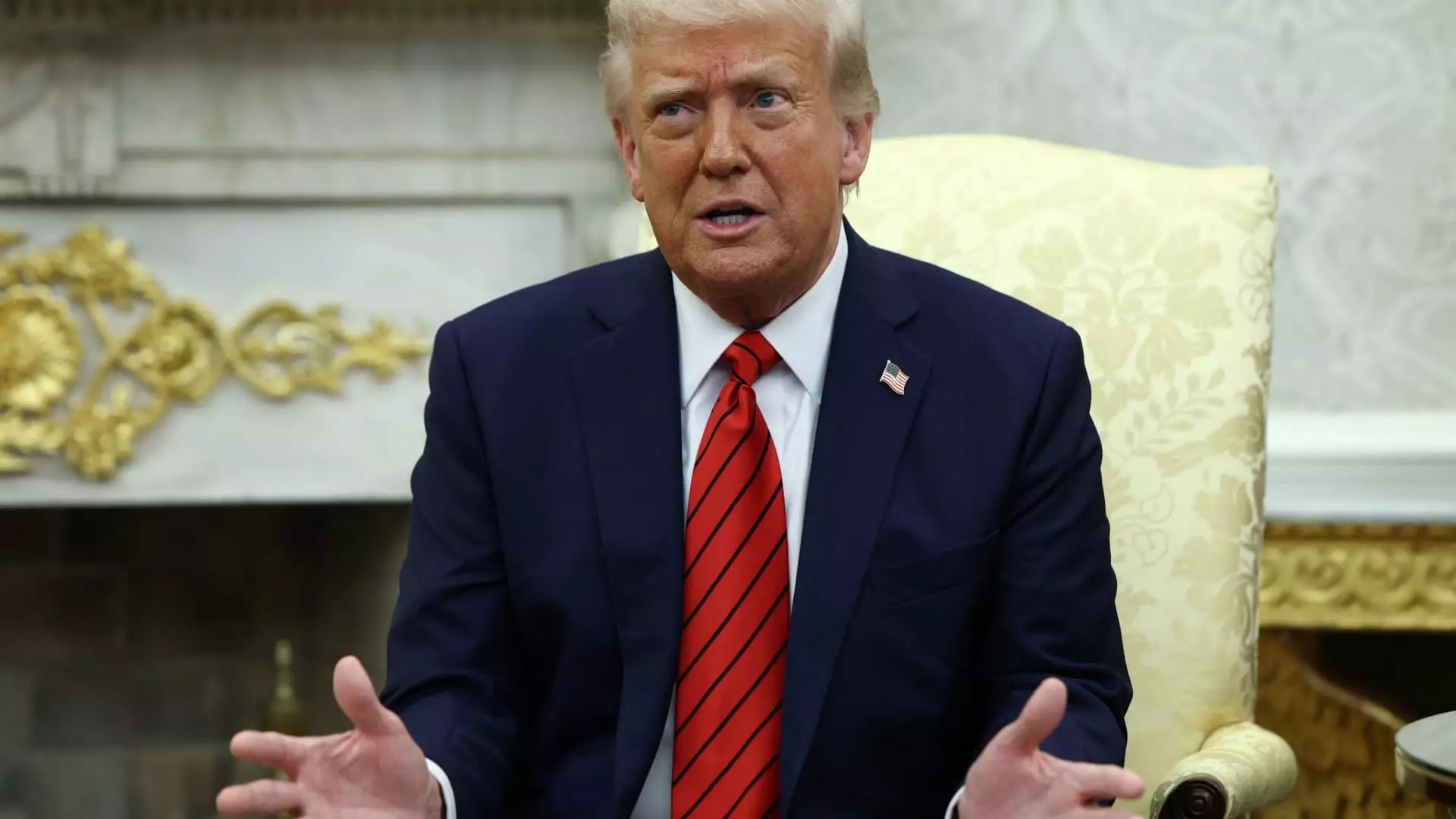The recent turbulence in the stock market, primarily influenced by President Donald Trump’s announcement of reciprocal tariffs, serves as a glaring reminder of the precarious balance that defines our economy. The chaos may feel like it’s begun to subside, yet the underlying fear and uncertainty still lurk within the hearts of investors, causing them to question the safety and stability of their portfolios. The lack of concrete outcomes following these tariff discussions only serves to underline the volatile nature of trade relationships. While trade levies are ostensibly on hold until July, the question remains: how does the unpredictability of such policies impact the confidence of those who invest their hard-earned money into the economy?
It is important to note that the looming possibility of a trade war is not merely an abstract concept; it triggers tangible consequences in the market. With projections of impending deals with approximately 15 countries accompanied by the absence of concrete outcomes, it’s no wonder anxiety permeates the investment atmosphere. Investors are left grappling with uncertainty—does the term “trade negotiations” equate to potential profits or imminent losses?
The Individual Stocks Under Fire
Even as the broader market appears to reflect a tapering fear regarding Trump’s tariff promises, individual stocks still face a myriad of pressures that can lead to sudden and damaging fluctuations. Nvidia’s recent announcement, revealing a staggering $5.5 billion charge linked to export restrictions, exemplifies the direct hit an individual company can sustain from these ambiguous trade policies. A staggering drop of 6.9%, followed by an additional 2.9% slide, reveals how susceptible these companies are to single news bites that could swing investor sentiment and market valuation overnight.
The term “Trump rug” aptly summarizes the feeling of uncertainty surrounding stocks, as analyst Stacy Rasgon points out. If these regulations dampen profitability or limit operational agility, investors must remain vigilant. The intermingling of trade discussions with unrelated government projects, such as TikTok sales or financing for an Alaskan natural gas project, poses unique risks, leaving stock performance dangling precariously on unpredictable negotiations. With investors already pulling back from U.S. assets, the stakes have never been higher.
The Ripple Effects of Earnings Season
As the earnings season unfolds, the narrative weaves a complex tapestry influenced heavily by the erratic nature of trade policies. Corporate executives face the challenge of translating a murky trade environment into manageable forecasts for their stakeholders. Many may resort to underselling their projections or producing dual forecasts, reflecting a trend towards conservatism in predictions. This has become a calculated risk, as companies navigate through unchartered territories hoping to reassure anxious investors.
Interestingly, traders appear to be displaying less tolerance for negative revisions than ever before. According to Adam Parker, the recent trend shows that harsh penalties are now meted out to any stock experiencing a downward revision of more than 5%, reflecting a climate of increased emotional responses over substantive data. The 4th percentile penalty signifies a sea change in investor sentiment, illustrating the precariousness of confidence within volatile periods—investors prefer to err on the side of caution, reacting impulsively to alterations in earnings rather than waiting for more complete information.
Global Trends vs. Domestic Sentiments
While U.S. retail may find temporary solace in the ‘stop-start’ nature of tariff negotiations, global investors are increasingly shying away from American assets. The juxtaposition of domestic optimism against a backdrop of international skepticism creates a lopsided impact that can impede overall market recovery. The allure of U.S. stocks appears diminished in the broader global landscape, forcing stakeholders to reconsider their positions.
Lawrence McDonald points out that tariffs, while potentially sparking domestic support, do not guarantee sustained international investment. The implications for major segments such as technology or manufacturing remain daunting as these sectors may find themselves disproportionately vulnerable to trade negotiations that affect their supply chains and cost structures.
In this high-stakes environment, the need for cautious optimism prevails as investors tread carefully through the financial maze. The intricate dance between tariffs, negotiations, and investor sentiment underscores the necessity for strategic foresight. The coming weeks will reveal how this drama unfolds, but one thing is clear: vigilance must remain at the forefront of every investment decision.

